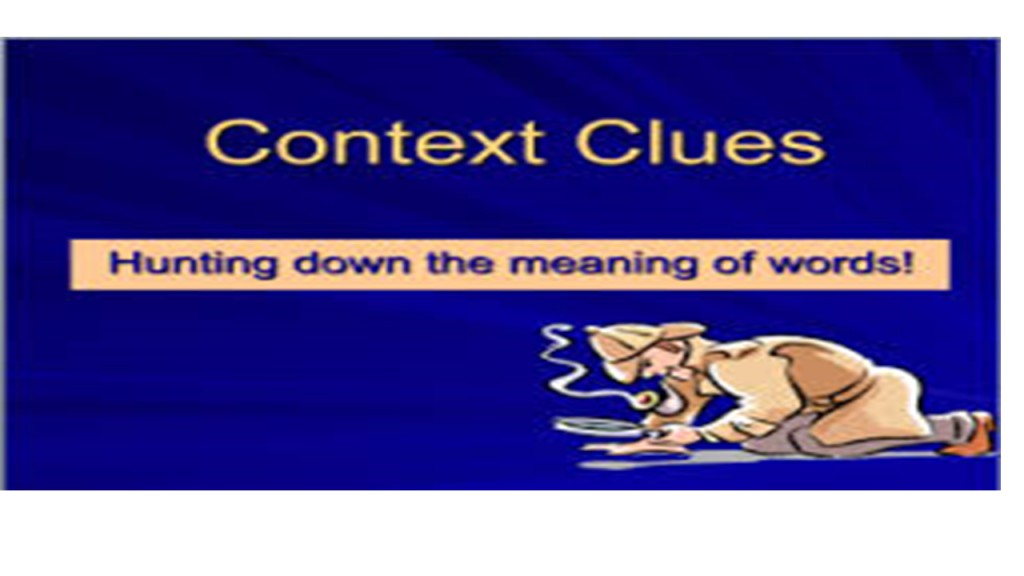Surprising Teaching Move Leads to Success with Struggling Students:

As educators, we know the importance of having clear objectives. We know that we need to differentiate our instruction, even if we don’t always know how for the populations we serve. However, did you also know that research shows significant results when teachers work to create a culture where students are encouraged to and feel at ease asking for explanations and asking for help? So why is that, you ask? There is a certain amount of vulnerability in asking for help and telling a teacher in front of an audience that you don’t understand something and need additional explanation. In an age where image and social pressure is growing by the second, these are behaviors that have to be explicitly taught, fostered, and encouraged. This idea that students’ self-confidence and ability to maintain a positive attitude about themselves even when they don’t understand has an incredible impact on their ability to engage with the content and practice their new learning correctly. Additionally, many struggling learners and ELLs have high anxiety when it comes to speaking in public – especially early in their language development. This affect towards engaging orally in class could have a critical negative impact for kids. Students who are too anxious to verbalize their lack of understanding and need for additional help slide further behind in the access to grade level content. Educators must also be alert to possible delays in their language development. The reality is that language production is incredibly complex, which is why there is a great deal of anxiety around it for some learners. But if we cannot find a way to ease that affect towards speech in general, and more specifically towards asking for help and clarification, the students’ learning potential will not be realized. Finally, when struggling students are stressed, they go into a “survival mode” or “fight or flight” mode of thinking. The stimuli that cause students’ stress levels to rise and to feel stress range from the physical space, to emotional climate of the class, connections a child may have to other negative events, and people’s interpretations of every interaction. When students feel stressed based on one or more of these possible events, they do shift into a mental “survival mode”. While in this mode, learners are not able to cognitively perform at higher levels. Some may find themselves “going blank”, others preoccupied with getting called on by the teacher, and still others may just have a general sense of being incapable of grasping the content that is being shared with them. And how does one ask questions, when they are at such a loss and state of stress. So what can teachers do: Help students to be question conscious – that is to notice the questions they have and to enjoy asking questions that take their learning deeper. Incentivize students being brave by asking for help and explanations when they need it. Set up a place, structure, or cue for less verbal students to ask for help and explanations. This could be anything from flipping a card on their desk to flipping down the corner of their paper. Allow group influence to support the work. Many times, if one person does not understand something, there is another who feels the same, but did not ask. By encouraging the class to thank the person asking the question for helping them all to learn, you allow the class to be part of how you reinforce that very behavior. Create a buddy system. Encourage students to take care of each other by seeing if their buddy has any questions and if they know how to successfully complete the work.
Essential Language for Reaching the Common Core:

Over the last few weeks, we have talked at length about a number of ways to increase your students’ vocabulary so that they are able to access increasingly more complex text and grow as readers and intellectual beings. In fact, with the arrival of the Common Core State Standards, we’ve all become more mindful of the complexity of texts we present to our students and the tasks they are given to process what they’ve read with increasing depth and challenge. In order to begin accessing increasingly complex texts, we know that one thing students need to acquire is a growing bank of words at their disposal in order to make meaning. However, in order for students to begin to successfully tackle more rigorous tasks, there is another critical need. It is absolutely vital that students understand what a performance task, practice application, or assessment is asking for them to do with the same level of fluency and automaticity that we expect from them when reading any text or passage. The Common Core State Standards offer us two categories of words that students must master – nouns and verbs. The nouns of the standards detail the key concepts and ideas that are essential take aways in Literacy, Math, and NGSS. Without access to these words, students will struggle to make meaning of and from the standards with rigor or precision. The verbs of the standards outline the thinking and mental tasks for which students must be prepared to engage. It is one thing to give students the opportunity to critique a peer’s argument, and to revise their argument based on that feedback (depth of knowledge 4). It is another reality for that student to expertly know what it means to offer a peer that critique. There are a number of strategies that you can leverage in order to teach these words such as: gradual release with modeling, visual representations, total physical response, four square, concept mapping, categorizing, creating student glossaries/dictionaries, gradients, word play, and more. Additionally, it is critical to know what these high leverage words are. While the nouns vary between the different subject areas and grades, the following list of verbs will be an incredibly helpful starting point in teaching your students words that will help them to think with the depth necessary to successfully complete tasks and master the standards. Analyze Articulate Cite Compare Comprehend Contrast Delineate Demonstrate Describe Determine Develop Distinguish Draw Evaluate Explain Identify Infer Integrate Interpret Locate Organize Paraphrase Refer Retell Suggest Summarize Support Synthesize Trace If there are additional ways that you help your students to access the language of the Common Core State Standards, please comment below. Or you can email us at tajulearning@gmail.com.
Part 5: Teaching Cognates to English Learner Students

When it comes to English Language Learners, it is critical that students have the opportunity to see their native language as an asset. Particularly for native Spanish speakers, a way to do that is to help them understand the sheer amount of academic vocabulary they have at their disposal through the use of cognates. Teaching students to leverage their native language to their advantage by looking for cognates is incredibly powerful due to a number of factors. One of those factors is the nature of these cognates themselves. Many of the cognates in Spanish seem to be high use words that cross domains (Reading, Science, Math, etc.). For example, matemáticas and mathematics are cognates in Spanish. The fact that these are “high utility” words only strengthens the power of instruction with them because of the the impact of multiple exposure to a specific set of words and student acquisition of the “layers” of meaning a given word might have. One strategy to do this is to following the process below: Teach students what cognates are – “words that mean just about the same thing in English as in your native language”. Have students look at for words that might be cognates in authentic texts Have the students answer the following questions about the word What is the English word and what is the native language equivalent? Does the word mean about the same thing in both languages? Do the words sound alike? Do the words look alike? Are the two words cognates? Why or why not? Are there any parts of the word that are not the same? While this strategy above is not fool-proof, it does begin to help students see how to pull from their native language knowledge in order to have access to a larger bank of words, concepts, and background knowledge which can only help. If you have questions about cognate instruction, please don’t hesitate to leave your question below. Additionally, if there is an additional topic that you would like to see posted or additional ways that you engage your students to invest in word learning, please comment below. Or you can email us at tajulearning@gmail.com.
Part 3 – Strategies for Learning Unknown Words

Yes, students need access to a large bank of words in order to be successful readers. But they also need to be able to process and analyze new words for meaning as they encounter them. Without this skill, readers miss important parts of text that hinders their ability to make meaning. These “word learning strategies” generally fall into two categories. The first category is “inside” the word clues (from here on out referred to as inside strategies). These clues come from the morphemic analysis of the word itself. The second category is “outside” the word clues (from here on out referred to as outside strategies. These clues come from the contextual analysis of the surrounding text and text features of a passage. When teaching inside strategies, teachers have the opportunity to show students that we can find meaning in a word by looking at its important parts. Students do so by looking at root words, base words, affixes, inflectional endings, and chunking. When teaching inside strategies to ELL’s and struggling learners, consider including these critical pieces as part of direct instruction. Know that gradual release (teacher modeling, shared practice, guided practice, independent practice and application) of this skill is necessary for effective implementation by students. Look to see if there is any word chunk that you recognize (either base, root, or other high frequency word you know). Take apart the word into any bases or roots and their affixes. Find meaning from those word parts that you’ve taken apart. Rebuild that word using the meaning you’ve gleaned from each important part. When teaching outside strategies it is important to help students see syntactic and semantic clues provided by surrounding words and phrases. Syntax is a fancy way of talking about the rules that form our grammar structure and the patterns that we find in sentences (e.g. if you see a subject first, you know that a verb must follow). Semantics simply means, meaning or an interpretation of its meaning. Therefore, outside strategies really help students understand how to use what they know about English and the meaning of the surrounding text to make educated guesses about what a word means. When teaching outside strategies to ELL’s and struggling learners, it is important to include the following components as part of the process for increasing vocabulary development. Teach students that writers use specific clues to the meaning of challenging words in the text. Deliver explicit instruction that includes modeling and examples of the various types of context clues (i.e. definition, synonym, antonym, example, and general). Provide guided practice in using context clues with authentic and appropriately challenging texts. Now, I know that we have simplified this process greatly. However, if you are interested in what these two approaches might look like, please take a look at our products Context Clues and Text Clues. Both of these common core aligned resources provide student reference sheets, anchor charts, activities, and explicit examples for teaching inside and outside word clues. And, as always, if you have any questions or comments, don’t hesitate to send us a message. By: Alexandra Guilamo
Vocabulary Instruction: Part 1 – Building Word Consciousness for ELs and Struggling Students

“Word consciousness – and especially understanding the power of word choice – is essential for sustained vocabulary growth. Words are the currency of written language. Learning new words is an investment, and students will make the required investment to the extent that they believe that the investment is worthwhile.” Judith Scott and William Nagy. Because of the fact that words are the “currency” of the written language, word consciousness, although a relatively new concept, is critical to its successful application. Word consciousness involves two critical components. The first is an appreciation of the currency. Do students value new and vivid words, do they notice and appreciate descriptive language, do they stop and think about word choice in texts they read and in their own writing, etc? The second aspect of word consciousness is the idea that this awareness of and interest in words will lead students to the ability to know a word to the extent that they will have the desire to play with its meaning and apply it flexibly and accurately. It means that they will be invested enough to know a word truly in order to apply that knowledge anywhere at any time. This is an immense task. But at the center of this challenge is the question of whether or not students even know “why words are important”. It is not enough for the adults who teach them to merely tell students about the power of this currency. Rather, students must appreciate the importance of words and their use for themselves. They must first have a sense of gratefulness for the way words can make a person feel and the things words can do beyond the page before they can be asked to invest so fully in the tasks of awareness and investment in this currency. So what are some quick ways that can teachers build word consciousness in their classrooms? • Let students lead and own how they define the importance of words and their use. • Be interested in words yourself. Research has shown that when adults notice new words and get excited, that pattern of excitement is continued by the students who see this model. • Have a word-rich classroom where students’ exposure to vocabulary. Students should be surrounded by words and books and motivated to learn the words within them. • A safe environment where students feel comfortable trying out new words and talking about that choice is critical. • Students become more engage with words when they have the opportunity to play games, puzzles, and take part in activities that allow them word choice. • Give students choice. Self-direction is a powerful motivator for many activities, but even more so for the development of affect towards new words. • Students must have intentionally planned time to engage in metacognitive discussions about word meaning interpretations, word parts, and other conceptual knowledge that will help them transfer the words to different contexts. • Gradient activities allow students to see and play with relationships of “degree” between similar words with connotations such as angry and livid while leveraging nonlinguistic representations.
